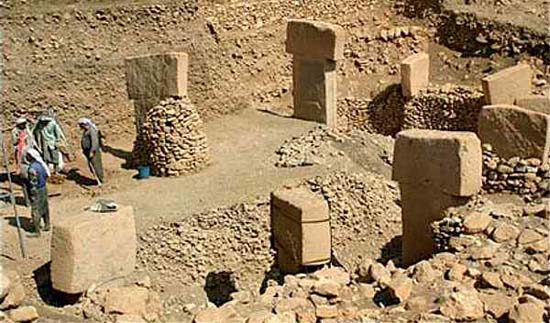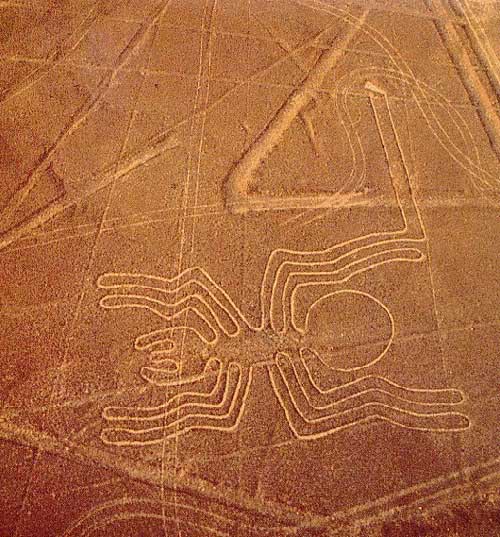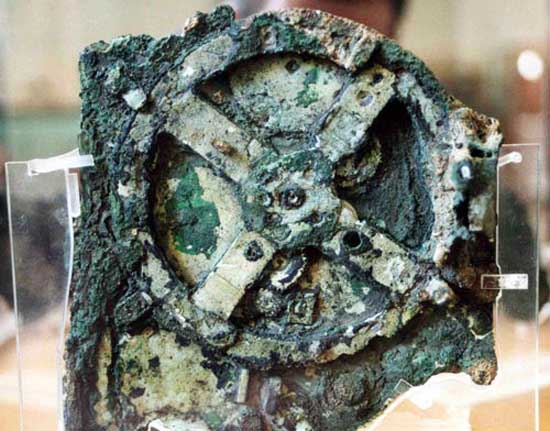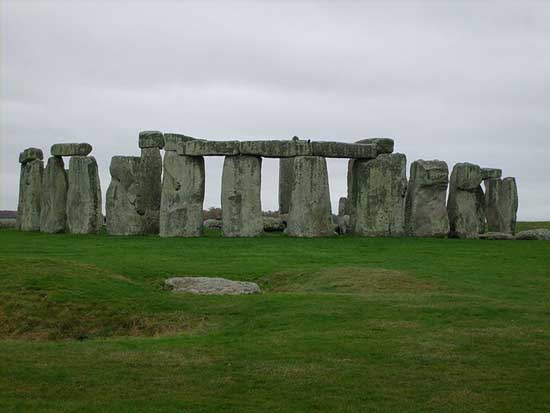Mysteries from ancient times are still a puzzle to modern people. They are always stories that pique the public’s interest, perhaps because no one can explain them themselves. and why these mysteries still exist. Below is a list of 7 archaeological discoveries leading human interest today:
The world’s oldest temple Gobekli Tepe – Türkiye

Located about 6 miles from the city of Urfa is an ancient city present in the Southeast region of Turkey, German archaeologist Klaus Schmidt has revealed one of the important archaeological discoveries. most of our time: it is a majestic stone wall dating back about 11,000 years ago, they were built by Prehistoric people, perhaps at that time metal tools did not appear. or even ceramics. It is important to know that the world-famous Stonehenge giant stone site was only born about 6,000 years ago today.
The newly discovered stone site is called Gobekli Tepe , and archaeologist Klaus Schmidt has been working here for more than a decade, with dating proving that the site was a temple complex. oldest temple in the world. Sections of the city wall or rows of stone pillars are arranged together in a circular shape. Besides, on a hillside there are 4 circular belt roads with traces of stone pillars that were once built here. Each circular belt has a similar layout, that is, in the middle of the circle are two T-shaped stone pillars, surrounded by smaller stone pillars all facing the two main pillars. The tallest stone pillar towers are nearly 5 meters high. Schmidt said that these stone pillars weigh from 7 to 10 tons. This is the first Holy Land in the world that was created by humans.
Great Pyramid of Egypt

How the ancient Egyptians were able to build the Great Pyramid complex is still a question without a convincing answer. Historian Herodotus said that the Great Pyramid was built within 30 years under the diligent labor of about 100,000 slaves. Another theory is that this giant architectural complex was built by ancient Egyptian farmers to prevent the annual flood of the Nile River falling in July and November. The construction of the Great Pyramid was transported from Aswan and Tura, perhaps the ancients used water power to transport giant blocks of stone to gather at the construction site.
The Great Pyramid may have been built between 2589 and 2566 BC. People used more than 2,300,000 stone blocks with an average weight of 2.5 tons. The total weight of the stone blocks building the great project is up to 6,000,000 tons and the pyramid tip is up to 140 meters high. The Great Pyramid is the tallest and oldest structure of the Giza pyramid complex. The tomb located inside the pyramid has been exploited by antiquities thieves. The owner of this architecture must have been a very wealthy King. He was buried alone in a giant tomb. The wives of Egyptian kings may have been buried in smaller tombs next to the pyramid.
The Queen’s Crypt has never been used. The floor in this crypt has never been polished, it has a rough, rough look. In addition, the ventilation ducts inside the pyramid are still a mystery. There is a theory that perhaps not every space inside the pyramid has a ventilation pipe installed and it is considered an important religious symbol. When the ancient Egyptians believed that the stars were the refuge of the Gods and the souls of the Dead. In the Egyptian king’s tomb, the walls are made of pink Aswan granite, and the sarcophagus has no lid. Perhaps the sarcophagus was already placed in the heart of the crypt, then people built a pyramid on top.
Nazca Lines – Nazca Desert – Peru

The Nazca Lines are a series of ancient geoglyphs located in the heart of the Nazca Desert in Peru. This line complex has been recognized by UNESCO as a world cultural heritage . The mysterious lines stretch for more than 80 km between the two towns of Nazca and Palpa on the Pampas plains. Scholars believe that the Nazca Lines were created by the Nazca culture between 400 and 650 AD.
There are hundreds of isolated drawings depicting hummingbirds, spiders, monkeys, fish, sharks or orcas, llamas and lizards. These lines are drawn shallowly on the ground using red pebbles painted on top of the white lines. Hundreds of simple drawings or geometric shapes, including more than 70 motifs of animals, birds, fish or human figures. The largest drawing is up to 200 meters long. The geometric forms depicting a flowing stream of water seem to depict some ancient water ritual. Spiders, birds and trees are symbols of prosperity. Other drawings are related to irrigation or astronomical calendars.
Thanks to the dry, windless conditions and balanced climate on the plains as well as the wilderness and remoteness, these lines have been preserved intact until today. de Jumana
The world’s oldest computer Antikythera

The Antikythera machine is conjectured by scientists to be an ancient mechanical computer designed to calculate the positions of celestial bodies in the universe. This strange computer was recovered in 1900–1901 from the shipwreck of the Antikythera, but its complexity and true meaning remained a mystery decades later. . This machine has been dated from around 150–100 BC (BC). Similar technologies were not common until the 14th century when mechanical astronomical clocks were created in Europe. Captain Jacques-Yves Cousteau visited the Antikythera shipwreck in 1978, but did not discover any remains of the Antikythera mechanical machine.
Professor Michael Edmunds from Cardiff University (Wales, UK), who led the mechanical research, recently said: “ This device is a sophisticated item. It has a beautiful design and accurate astronomical calculations. Perhaps its creator was very careful in every small detail… in terms of historical stature and scarcity value, I judge that it is more valuable than the painting masterpiece Mona Lisa . This device is on display at the Bronze Collection of the National Archaeological Museum of Athens and other restored copies are on display at the American Computer Museum in Bozeman, Montana (USA), the Museum of Children in New York and in Kassel (Germany). Investigators hypothesize that this ancient computer device may have been designed by the Syracusa people and that it is a work inspired by the work of Archimedes.
Ancient hunting traps – Israel, Jordan, Egypt
British Royal Air Force (RAF) pilots in the early 20th century first discovered a line shaped strangely like a bird’s wing located in the heart of the deserts in Israel. Jordan and Egypt. These lines are quite low, it is a kind of stone wall, the two walls run in a pair and run parallel towards the same circular hole.
In some places in Jordan, these stone walls form a chain up to 40 miles long. Are these structures a joke? An ancient spaceport runway? A study of 16 ” kites ” in the Eastern Sinai Desert (Egypt) has confirmed what researchers have been expecting: These stone walls are a trap used to block animals. As big as a gazelle, it gradually entered the hole and destroyed it. In addition, these ” kite lights ” were formed between 2,300 and 2,400 years old, and were broken down 2,200 years ago. “Research has shown that the construction of “kites” was actually much more sophisticated in ancient times than what we see today, the ancients were knowledgeable about the human world. animals rather than people today “, according to Mr. Uzi Avner of Ben-Gurion University of Eilat (Israel).
Stonehenge stone circle – England

Stonehenge is a stone monument dating back to the Prehistoric period, located in the English county of Wilshire, about 3.2 km west of the city of Amesbury, about 13 km north of Salisbury. One of the most famous archaeological sites in the world, Stonehenge consists of circular mounds surrounding a giant stone circle. It is the center of a dense complex of Neolithic and Bronze Age monuments in England, including hundreds of different burial mounds.
Archaeologists believe that Stonehenge was built in 2,500 BC. However, one recently proposed theory states that this fascinating archaeological site was not previously found until 2,400 BC – 2,200 BC, while other theories suggest that the bluestones were used as The foundations for Stonehenge date back to as early as 3,000 BC. The earthen circles and moats surrounding Stonehenge date back to 3,100 BC.
The Stonehenge site and the architectural works surrounding it were recognized by UNESCO as a World Cultural Heritage in 1986, a list that comes with the Avebury Henge memorial. Stonehenge is managed by the English Heritage Trust, while the land surrounding it is owned by the British National Trust . Reburial activities continued to take place at Stonehenge for at least the next 500 years.
The legendary continent of Atlantis

Atlantis (“Atlas Island”) is a legendary island, first mentioned in Plato’s dialogues Timaeus and Critias. According to the great sage Plato, A tlantis ” located on the front of the columns of Hercules ” included many parts in Western Europe and Africa about 9,000 years before the time of Solon, or approximately in 9,600 BC. After failing to conquer Athens, Atlantis sank into the ocean at the ” end of day and night “.
Some scholars argue that Plato evoked memories of past events such as the eruption of Thera volcano or the Trojan War, or the failed invasion of Sicily in 415 BC–413 trCN. While little evidence refers to Atlantis during the Middle Ages, the story of Atlantis was rediscovered during the early modern period. The mystery of the continent of Atlantis has influenced many literary works, from science fiction novels to cartoons and movies.





